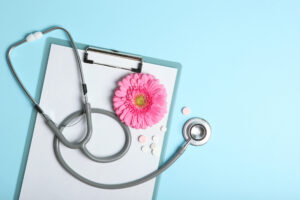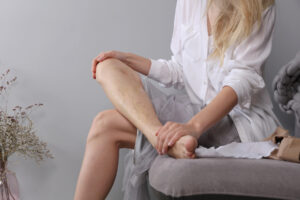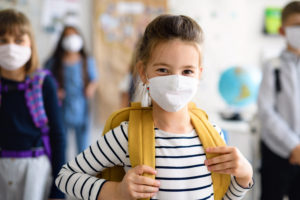
In a youth-obsessed world, where “perfection” of skin and body is heavily promoted by popular media, women often find themselves struggling to find anti-aging treatments. Though the expectation to stop time and its effects on the body and skin is far from realistic, an increasing number of both men and women invest a lot of time, energy, and money in anti-aging treatments and, often, invasive procedures. A different perspective, however, may suggest that the wish to remain young-looking does not have to do so much with appearances, as with keeping your body and skin healthy.
Skin and Face
A lot of focus is placed on how healthy and rejuvenated one’s face skin looks; ergo, the following anti-aging tips may help you take care of one of the most exposed parts of your body.
- Use a cleanser: the first important step to keep your face looking clean is to use a cleanser that agrees with your skin. Try to avoid abrasive products and be mindful of whether your chosen product is either drying your skin too much, or leaving you feeling oily even after washing. Keep in mind that depending on where you are on your menstrual cycle, you may need to use different products.
- Find a serum: serums are concentrated products that you rub onto your skin, using a circular motion to open up the pores and relax your muscles. They usually consist of a combination of vitamins and nutrients, most commonly hyaluronic acid to increase skin elasticity, as well as vitamins C and E for skin rejuvenation. Serums also contain antioxidants. Some of the serum ingredients can be light sensitive, so be careful which one you use during the day or at night!
- Moisturizers and sunscreen: though it may seem simple, just like with the cleansers you want to make sure you are using a moisturizer that agrees with your complexion and adequately protects your skin. If you are prone to acne, you want to be especially careful with your choice of moisturizer, opting for a more natural-based face cream. Contrary to popular belief, sunscreen ought to be used every time you are exposed to the sun and not only during the summer or at especially sunny places. In fact, sun reflecting off white snow or sun exposure at higher altitudes can be much more damaging.
Healthy Living
Time takes its toll on the human body, and as much as many of us would like to rewind the clock we need to remember there is no quick fix. Skin care definitely helps us look youthful, but the real secret comes with following a healthy lifestyle: stay hydrated by drinking plenty of water, exercise appropriately for your body and age, consume nutritious foods and follow a diet that agrees with your body type and your body’s needs, and be cautious of promising schemes that claim to reverse the aging process—it’s not that simple!
More
By Iris Farrou
31 May, 2021
Women's Health
Best gyns in Buffalo, Best OB practices in Buffalo, Best OBGYN Groups in Buffalo, Buffalo OB-GYN, Buffalo OBGYN, Chouchani MD, WNY OB-GYN, WNY Ob-gyn doctors, WNY OBGYN, women's health
 Vaginitis and bacterial vaginosis are both equally common vaginal infections. While the symptoms experienced may be either completely the same or very similar, the treatments for the two are very different. It may help to understand that bacterial vaginosis is a type of vaginitis, along with yeast infections and trichomoniasis. Additionally, there are some slight differences as far as the symptoms are concerned which may help you distinguish what it may be, should you experience abnormal discharge.
Vaginitis and bacterial vaginosis are both equally common vaginal infections. While the symptoms experienced may be either completely the same or very similar, the treatments for the two are very different. It may help to understand that bacterial vaginosis is a type of vaginitis, along with yeast infections and trichomoniasis. Additionally, there are some slight differences as far as the symptoms are concerned which may help you distinguish what it may be, should you experience abnormal discharge.
Vaginitis
It is caused by a change in the normal levels of vaginal bacteria or by an infection. It may also be caused by some skin disorders or reduced estrogen levels (usually after menopause). Overall, it is an inflammation of the vagina that can lead to itching and discharge, as well as pain during intercourse and urination. It may also lead to vaginal bleeding or spotting.
Vaginosis
Overgrowth of vaginal bacteria cause this vaginal inflammation, which results in discharge of gray, white, or even green color. Itching and pain during urination are also common symptoms, as is foul-smelling vaginal odor. Keep in mind that many people with bacterial vaginosis may not experience any symptoms. It can affect any age, but it is more common on women of reproductive ages.
Diagnosis
Any doctor will probably begin by looking into your medical history and, of course, take into consideration your sexual history to determine risk factors—especially if you have multiple sex partners or a new sex partner. The existence of previous vaginal infections is also a risk factor, as are your hormonal levels. Performing a pelvic exam to check for vaginal inflammation and discharge is also standard procedure. If your doctor is suspecting bacterial vaginosis, it is also likely that they will check your abdomen and pelvic organs for any indication of disease. Taking a sample for lab testing and examination of vaginal secretions and pH helps reach a more detailed diagnosis as well.
Treatment
Depending on the type of vaginitis diagnosed, your doctor will assign different treatments. Yeast infections are the easiest to treat with over-the-counter (OTC) medications, usually anti-fungal creams. Keep in mind that though OTC are convenient and cost-effective ways to treat vaginal abnormalities, the wrong medication can lead to more complications and delay proper diagnosis and treatment.
Bacterial vaginosis may be treated by prescribing Metronidazole, which can be taken orally or as a gel applied into the vagina. Other treatments include: Tinidazole, a prescribed oral medication and Clindamycin, a vaginal gel. Note that vaginosis can spread between female sexual partners, and it is especially important for pregnant women to be treated to avoid early birth or low birth weight.
There is also non-infectious vaginitis to keep in mind, which may be caused by other sources of irritation such as a new soap or laundry detergent, tampons, or sanitary napkins.
More
By Iris Farrou
19 May, 2021
Women's Health
Best gyns in Buffalo, Best OB practices in Buffalo, Best OBGYN Groups in Buffalo, Buffalo OB-GYN, Buffalo OBGYN, Chouchani MD, WNY OB-GYN, WNY Ob-gyn doctors, WNY OBGYN, women's health
 One of the most common concerns of aging women is the appearance of varicose veins on their legs. Varicose veins and spider veins are swollen, twisted veins that are mostly found on the legs and appear more in women because pregnancy tends to increase the risk of having them. Additional factors are older age and obesity. Both types of veins are usually painless, don’t cause health problems, and can be treated for cosmetic purposes. Some people report experiencing aching pain and discomfort, while varicose veins sometimes lead to more serious problems.
One of the most common concerns of aging women is the appearance of varicose veins on their legs. Varicose veins and spider veins are swollen, twisted veins that are mostly found on the legs and appear more in women because pregnancy tends to increase the risk of having them. Additional factors are older age and obesity. Both types of veins are usually painless, don’t cause health problems, and can be treated for cosmetic purposes. Some people report experiencing aching pain and discomfort, while varicose veins sometimes lead to more serious problems.
What is the difference?
Varicose veins are red, blue, or skin colored and seem to have a rope-like texture, while they also tend to cause the skin to bulge out. They are often on the thighs and calves, as well as the inside of the leg near the ankles and feet. During pregnancy they can also happen in the lower pelvic area and the buttocks.
Spider veins are smaller than varicose veins, and predominantly red. They can be seen under the skin, but they do not make the skin bulge. They can from tree-like designs or look like spider webs (hence their name). Most commonly, they are seen on the legs and face.
Symptoms
Other than simply appearing under your skin, you may experience an achy feeling on your legs, muscle cramping, or swelling on your lower legs. Another sign may be worsened pain after either sitting or standing for an extended period of time. Itching or skin discoloration around veins may also be indicative of varicose veins forming.
Risk Factors
- Age: the older you get, the more chances there are of getting varicose veins. Wear and tear on the valves of your veins is normal with age, and eventually the blood may collect back into your veins instead of flowing up to your heart.
- Sex: as stated above, women are more likely to develop varicose veins. Hormonal changes may play a role, as they tend to relax vein walls. Additionally, hormone treatments increase the risk of varicose veins.
- Pregnancy, family history, and obesity are other risk factors you should take into consideration if you are worried about varicose veins in older age.
Prevention
Though you cannot completely prevent varicose or spider veins, as they have to do with normal wear and tear of your vein valves and strength of muscles, there are some ways to minimize the risk of getting them or avoid getting more. Improving your circulation and muscle tone through exercising, watching your weight, lowering salt intake, avoiding high heels, elevating your legs, and avoiding sitting down or standing up for a long time are all ways which may help reduce the risk of varicose veins.
More
By Iris Farrou
08 Apr, 2021
Pregnancy, Women's Health
Best gyns in Buffalo, Best OB practices in Buffalo, Best OBGYN Groups in Buffalo, Buffalo OB-GYN, Buffalo OBGYN, Chouchani MD, seasonal allergies, seasonal allergies during pregnancy, WNY OB-GYN, WNY Ob-gyn doctors, WNY OBGYN
Seasonal allergies can be exacerbated during pregnancy. It’s not always the seasonal allergens that cause your body to react, as pregnancy hormones can also be the cause of unexpected, atypical, or more severe histamine production. Pregnancy is already stressful and physically challenging at times: worrying about what you can and cannot eat, consume or drink, and which activities should be avoided. But as far as allergies are concerned, there are plenty of antihistamine remedies available during a healthy pregnancy.
Seasonal Allergies & Your Baby
Even if you never experienced any seasonal allergy symptoms prior to your pregnancy, but are allergically reacting to something, rest assured your baby will not be the slightest bit uncomfortable—despite what you may be experiencing. More importantly, your reactions don’t indicate that your child will be born with allergies.
Different Seasonal Allergies & Pregnancy
There are two types of seasonal allergies during pregnancy: typical spring allergens that begin as early as February, and summer allergies that last until late fall. Pollen is the culprit for seasonal symptomatic reactions. Ragweed, grass, mold, tree pollen, and other regional pollen-producers can thankfully be avoided and there are healthy ways to soothe your symptoms.
Other pregnancy-related reactions are not caused by your environment: a condition called “Rhinitis of Pregnancy,” usually experienced during the third trimester, is caused by hormone level changes that mimic reactions to seasonal pollens. If you experienced season allergies prior to pregnancy, they may potentially worsen while pregnant. Fortunately, there are many safe ways to treat the reactions.
Treating Seasonal Allergies in Pregnancy
First, stay informed by checking your local pollen forecasts on weather and news apps. You may know some pollens to avoid, but your body can react to new irritants. Wear protective masks while doing outdoor activities like gardening or mowing, and make sure to shower and change clothes once inside. Stay indoors when pollen counts are highest, usually between 5am and 10am.
If you’re experiencing symptoms, saline nasal spray is a safe, effective treatment. It’s important to not use them more than three days in a row, as overuse can worsen nasal congestion. Wearing nasal strips at night opens breathing pathways and leads to a better night’s rest.
Avoidance is always the best form of treatment, but there are over the counter safe medications:
- Benadryl (diphenhydramine) is most recommended
- Zyrtec (cetirizine)
- Claritin (Loratadine)
- ChlorTrimeton (Chlorpheniramine)
Allergy shots, if begun prior to pregnancy, are usually safe to continue. It’s best not to start any allergy treatment during your pregnancy if you aren’t sure how your body will react. As always, should you experience abnormal symptoms of allergies—or severe reactions to allergy medications—while pregnant, reach out to your doctor.
More
By Iris Farrou
19 Mar, 2021
Queer Health, Sexual health, Women's Health
Best gyns in Buffalo, Best OB practices in Buffalo, Best OBGYN Groups in Buffalo, Buffalo OBGYN, Chouchani MD, queer health, WNY OB-GYN, WNY Ob-gyn doctors, women's health

Many of the gynecological health issues associated with heterosexual women are also concerns of queer women, including homosexual and bisexual women. However, because queer women are not generally concerned with mainstream gynecological health issues, such as pregnancy and contraception, they may find it difficult to receive adequate support from healthcare professionals, or access unbiased and non-discriminatory resources. It should also not be forgotten that minority populations tend to experience higher levels of social anxiety, stress, and depression. As such, the higher levels of mental healthcare that queer women need, along with the lack of resources targeted specifically to them, places them at a precarious position when it comes to sexual and gynecological health.
Gynecological Care Tips
While the following tips and areas of concern to be noted may not apply to everyone, as sexual health depends on sexual preferences, family history, overall health, and health among other factors, these have been identified as the most common areas of concern among queer women.
- Bacterial Vaginosis: Lesbian women that seek care for bacterial vaginosis at women’s health clinics have been found to be twice the rate compared to heterosexual women. Bacterial vaginosis has been found to be associated with a higher number of female sexual partners, though its transmission mechanism is only hypothesized to be oral sex.
- Yeast Infection: Though not identified as a sexually transmitted infection, yeast infections can occur through direct skin contact with someone who harbors the organism. As far as lesbian sexual relations are concerned, this transmission may occur due to vulva-to-vulva connection, or through the transmission of the bacteria from the fingers to the vagina.
- Herpes, HPV, Hepatitis: Common as these are, they are also present in queer women’s intimate relationships—vaccinations against these infections, as well as practicing safe sex and maintaining personal hygiene and health minimize the risk of contraction.
Mental Health Care Tips
Sexual minorities do not only experience higher levels of stress and depression, but they also experience social discrimination and isolation. This can lead to a conglomeration of mental health issues, but most notably it tends to lead to queer women remaining silent when it comes to domestic abuse and intimate partner violence.
This silence is primarily associated with the general misconception that abuse is present only in heterosexual relationships, and it is also attributed to fear of discrimination. Though the discrimination and the experienced violence may be directly related, as queer women have been found to experience mental, physical and verbal abuse that targets their sexual orientation, it may also be indirect. Lack of training in part of service providers or discrimination in shelters create more difficulties for queer women who seek support against intimate or domestic violence, which in turn leaves them in abusive situations for a longer period of time.
It should also be taken into consideration that the fear of being “outed,” not receiving adequate support from health providers, friends, and family, or the fear of social and intimate isolation are factors that contribute to the higher rates of violence and abuse in queer women’s relationships. If you are experiencing partner violence, consider reaching out for support to a trusted individual, or conducting research on domestic violence support that may assist you in creating a plan to leave the abusive environment.
More
By Iris Farrou
20 Feb, 2021
Women's Health
Best gyns in Buffalo, Best OB practices in Buffalo, Best OBGYN Groups in Buffalo, Buffalo OBGYN, Chouchani MD, WNY OB-GYN, WNY Ob-gyn doctors, WNY OBGYN, women's health, women's health tips


 Polycystic ovary syndrome is a common health condition marked by irregular periods, or no menstruation at all. It is more common among women of childbearing age, but not exclusively. PCOS causes multiple cysts to appear in the ovaries, usually due to the overproduction of androgens. The most usual symptoms of PCOS are excessive hairiness, acne, and male pattern baldness. If symptoms go untreated, women with PCOS are at greater risk for heart disease, endometrial cancer, high blood pressure, and diabetes. It causes significant problems with weight gain and weight management, so diet tips and awareness are optimal if you have PCOS.
Polycystic ovary syndrome is a common health condition marked by irregular periods, or no menstruation at all. It is more common among women of childbearing age, but not exclusively. PCOS causes multiple cysts to appear in the ovaries, usually due to the overproduction of androgens. The most usual symptoms of PCOS are excessive hairiness, acne, and male pattern baldness. If symptoms go untreated, women with PCOS are at greater risk for heart disease, endometrial cancer, high blood pressure, and diabetes. It causes significant problems with weight gain and weight management, so diet tips and awareness are optimal if you have PCOS.
Insulin is a hormone produced in the pancreas and it helps with transforming sugar into energy. Women with PCOS have been found to have higher than normal insulin levels, and their bodies tend to not use the insulin produced effectively. This is known as being “insulin resistant,” where the body tries to keep insulin levels normal by producing even more insulin. Higher levels of insulin, however, cause the ovaries to produce more androgens—such as testosterone. Insulin resistance also makes it harder to lose weight, hence the challenge women with PCOS face.
PCOS and Diet
Though there is no one fit-all diet for women with PCOS, there is a general consensus agreeing that a diet high in refined carbohydrates doesn’t help anyone. Foods in a low glycemic index—such as legumes, nuts, seeds, fruits and other foods that are low-carbohydrates—and anti-inflammatory foods—such as berries, fatty foods, leafy greens—help with weight management.
To combat insulin resistance, consider adding the following high-fiber foods to your diet:
- broccoli
- cauliflower
- Brussels sprout
- red leaf lettuce
- arugula
- bell peppers
- beans
- lentils
- sweet potatoes
- pumpkin
- winter squash
To reduce inflammation, opt for a diet high in:
- kale
- tomatoes
- spinach
- almonds
- walnuts
- berries (especially blueberries and strawberries)
- fatty fish (salmon and sardines)
- olive oil
Other healthy dietary options include lean protein sources like tofu and chicken.
As with any medical issue, there is no one recipe for success; consult with your doctor or a medical professional if you need further assistance concerning your diet when diagnosed with PCOS.
More
By Iris Farrou
19 Jan, 2021
Women's Health
Best gyns in Buffalo, Best OB practices in Buffalo, Best OBGYN Groups in Buffalo, Best OBGyn groups WNY, Buffalo OB-GYN, Buffalo OBGYN, celiac disease, celiacs, Chouchani MD, Low libido, WNY OB-GYN

We often hear about the effects gluten intolerance, or even over-consumption of gluten, can have on our health, especially the ways in which gluten can disrupt healthy digestion. What may be less known, however, is how gluten affects our sex drive and therefore may be impacting our overall sexual health. Problems with your libido might be especially present if you are suffering from undiagnosed celiac disease and may not be following the recommended diet.
What is celiac disease?
Celiac disease is an immune disease the destroys the small intestine; you cannot eat gluten if you have celiac disease, because your body’s reaction will be to destroy the small intestine. However, each person may show different symptoms: some people’s digestive system is suffering, while others may be irritable and depressed.
What can celiac disease do to your libido?
Digestion
Celiac can cause bloating, gas, fatigue, and even depression. Though the mental aspect of how celiac may be affecting you is not to be overlooked, as chronic fatigue and depression can certainly have a negative effect on our sex drive, the physical aspect can be just as important. It is worth considering how much stress feeling uncomfortable due to digestive problems can add to your sex life.
Gluten and Hormones
Despite the physical effects of celiac disease, it is important to remember that gluten consumption may also lead to hormonal abnormalities. This is especially true when celiac disease causes malabsorption. Malabsorption can then lead to nutritional deficiencies, which in turn affect your hormones. As a result, your sexual desire—and in some cases performance—may suffer the consequences.
Gluten-Free Diet
If you suspect you may have undiagnosed celiac disease, it is suggested that you book an appointment with your physician to get a diagnosis. As with any medical issue, a self-diagnosis is not the best solution. However, reducing the amount of gluten in your day-to- day life may help with your digestion and possible hormonal imbalances, especially if you may just simply be intolerant to gluten.
It is recommended that you always get a proper diagnosis in collaboration with your doctor, or your primary physician, as a low sex drive may not necessarily be caused by gluten consumption; if there are any other underlying issues, a medical examination will help you resolve them, and it will lead you to a healthy diet that is appropriate for your body’s needs.
More

Women deciding to give birth at an older age is nothing new, and the average maternal age in the last decade has risen from 21 to 26. Becoming a mother for the first time comes even later in life for women with a college degree and a career, as reported by the New York Times. In general, women in their 30s, or even 40s, who decide to become pregnant are faced with a number of myths regarding pregnancy and maternity. Myths based on health reasons thrive, as do myths around social standing and becoming a parent later in life.
Myth of Infertility
Though it is true that fertility declines after the age of 35, that does not make it impossible for women to conceive after that age, nor does it mean that every woman who becomes pregnant after 35 has used IVF. The difficulties may be more, but they can be addressed with preventive fertility care, a healthy lifestyle, and prenatal planning with the support of your doctor. Keep in mind that issues leading to infertility are not always age-related, such as endometriosis. Therefore, there is no need to jump to conclusions about pregnancy over 35 as the challenges may have nothing to do with a woman’s age, and we can never know the capabilities of each body.
Myth of Putting the Child at Risk
Similar to the issue of infertility, the rumor that children born to mothers over 35 may be autistic or be diagnosed with Down Syndrome is alive and well. However, there is no evidence that directly links the mother’s age to such issues; there may be a higher risk of carrying a healthy pregnancy to term, or a risk of augmented complications, but only 1% of the cases of children born with autism since the 1990s has been due to maternal age. As with any maternal age, the mother’s overall health, diet and well-being has more of an impact on the baby’s health and on her pregnancy than her age per se.
Myth of Selfishness
Many women who decide to prioritize their education and career over starting a family fresh out of college, or even fresh out of high school, are criticized as being selfish. Another perspective on this issue, however, shows us that women who have kids early on face major difficulties in the workplace—from lack of childcare to limited opportunities to advance—and as a result have more trouble supporting their families. On the other hand, women who start their families having established a career earn about double the income than younger mothers and the opportunity to better support their kids.
Myth of Not Being Around
In addition to all of the above, women who give birth at a later age face the criticism that they will either be too old when their child reaches important milestones in their life or that they will not be around at all. Motherhood seems to provide such vitality to women that in the Journal of Health and Social Behavior in March 2005 it was reported that women who become mothers in their 40s are four times as likely to live to be 100! Additionally, we should remember that there are really no guarantees of “being around” at any particular age, as not everything always depends on natural causes.
More

There are different schools of thought on how often you should visit your OBGYN, and though one side recommends that you pay your doctor a visit once a year, the other side suggests that such frequency may not be necessary. The common ground, however, is that the frequency of OBGYN visits should depend on your overall health, as well as your personal history with gynecological health matters. It also varies among women, as every woman has different needs, and of course depends on age as well.
Age
Here are some recommendations based on age that may help you determine how often you should see your OBGYN, and for what services:
- Younger than 21: Start building a relationship with your OBGYN to feel comfortable asking them any questions.
- 21-29: You should receive a General Women’s Wellness Exam that includes a Pap smear and a pelvic exam once a year.
- 30-65: It is suggested to have a pelvic exam every year, and a Pap smear every other year unless otherwise suggested by your doctor. You should also have an HPV test done at least every 5 years.
- 65 and older: As long as you have had no history of precancerous cells or cervical cancer, you do not need to have Pap smears done. If you have undergone hysterectomy you also do not need a Pap test unless you have had a reproductive cancer in the past.
Other Factors
Though a Pap smear or a pelvic exam may not be necessary every year, keep in mind that the frequency of your OBGYN visits depends on other health factors as well. For example, if you are noticing that your gynecological health is out of the ordinary—such as excessive bleeding, or too little bleeding, abnormal pain, vaginal pain or discomfort, changes in menstrual cycle—you should consult your doctor and schedule a visit even if you are not due for one.
You should also reconsider the frequency of your visits to your OBGYN if it is suggested by your primary physician, if your overall health needs attention, and depending on how sexually active you are. If you are not having a Pap smear and have no other worrisome symptoms, some schools of though suggest that having a pelvic exam done may not be necessary. However, you should remember that a pelvic exam, along with other tests, can detect ovarian cancer early and provides a screening for sexually transmitted infections.
Preventive Reasons
In addition to the age factor and other reasons you may, or may not, need to visit your OBGYN you should be aware of the following, which are preventive services:
- Anemia screening
- Contraception and prenatal care
- STIs and HIV screening
- Diabetes Screening
- UTI screening
- Breast Cancer genetic test and mammography
- Osteoporosis screening
More

Parents are facing an incredibly difficult set of circumstances as they prepare to send kids back to school. Based on the district, re-opening plans vary widely. While private schools in the WNY area will offer full five-day, in-person instruction, most public school districts have opted for a hybrid format where families can choose between completely virtual or sending kids in two days each week.
With so many uncertainties (and frequent changes from districts and schools), it’s challenging for parents to make and feel confident in their decisions. However, whether you send your kids back to school for full-time, part-time, or virtual e-learning, here are some overall tips to help with a smoother transition.
Stick to a schedule:
Consistency is key for kids to succeed, especially with a mix of in-person and e-learning. This means, even though it’s tough to motivate yourself or your kids, it’s best to get up at the same time every day Monday through Friday. If kids need to be up at 7 a.m. for in-person learning, they should also get up and ready for e-learning at the same time. The daily schedule will help your kids stay on track when working from home as well. Scheduling breaks for exercise and mindfulness are strongly encouraged to keep mental health boosted.
Prioritize mental health and well-being:
Do your best to focus on both you and your children’s mental health. Go easy on yourself and your kids by allowing for more leeway with work. Parents should cut themselves a break, as it’s incredibly hard to manage your own work and also assist your kids with partial or full e-learning. Additionally, many kids are having a hard time adjusting and may not be as engaged or interested as they normally would be. Practice patience and understanding by prioritizing flexibility. Ideas to boost mental health include dedicating time for mindfulness and exercise, being open to seek therapy if you or your kids are having an especially rough time, and focusing on the positive aspect of your lives.
Limit online device usage:
While the internet is a game changer to make it possible for kids to learn remotely, remember the old saying about “too much of a good thing.” Try your best to limit screen time when not in virtual classes. While games, texting, and TikTok seem like a great way to reward your kids for staying on track, do your best to integrate other positive influences. Parents are busier than ever trying to work and monitor their kids’ studies, but it’s important to dedicate time for fun (non-screen activities).
Plan for family time:
In a world where most parents are exhausted by the end of the day, it’s hard to find motivation for family activities. However, with less parties and playdates to attend because of the pandemic, make an effort to plan more family only activities. Ideas include swimming, hiking, dog walking, swing-set playing, and riding bikes. Also look for fall ideas like planting and growing pumpkins.
More










